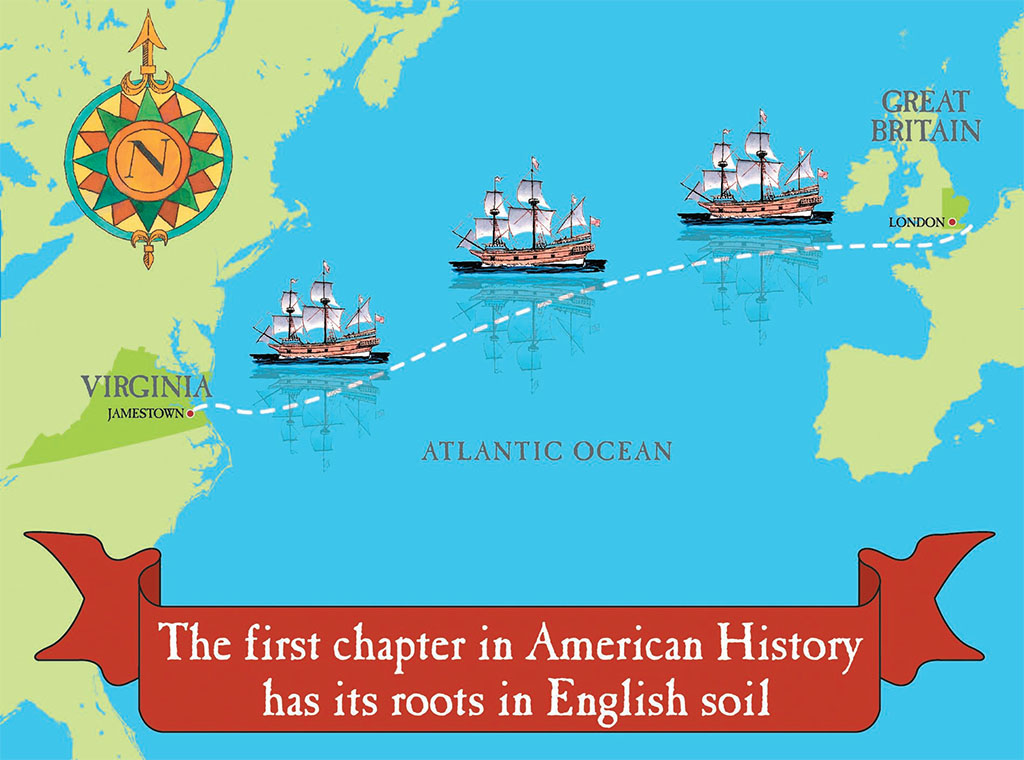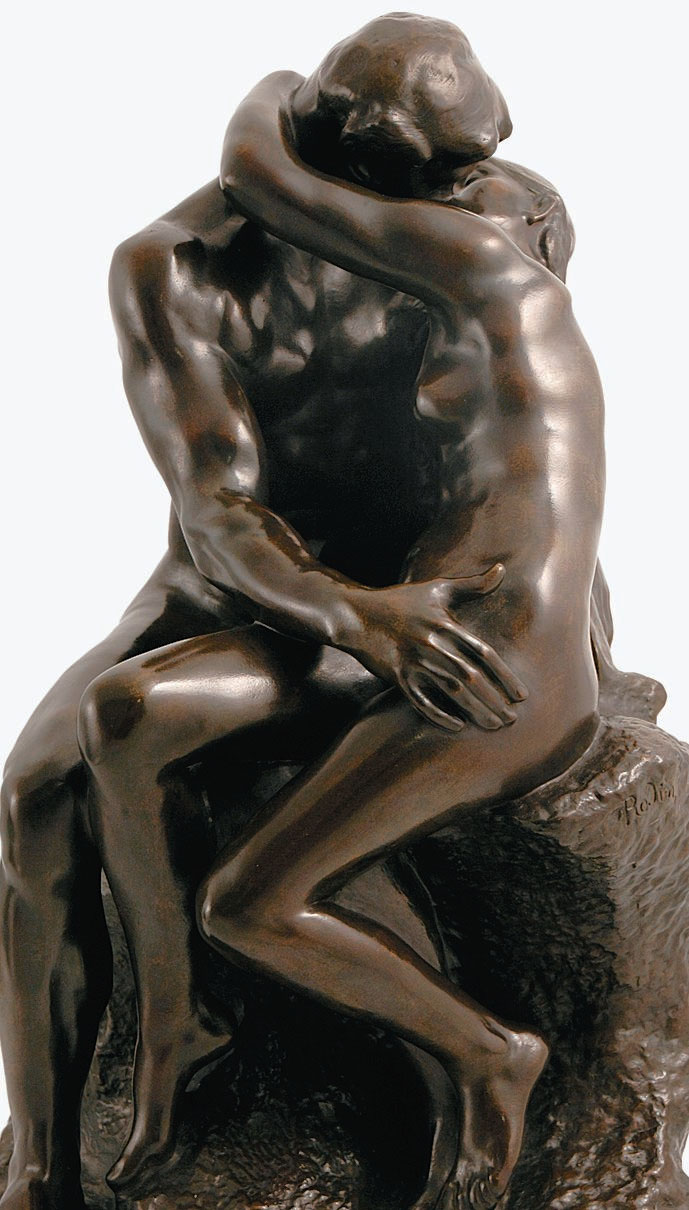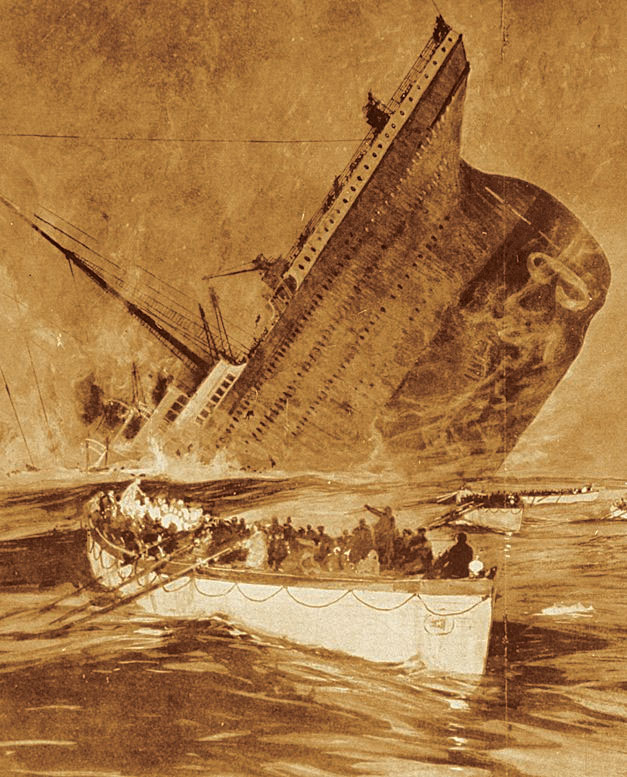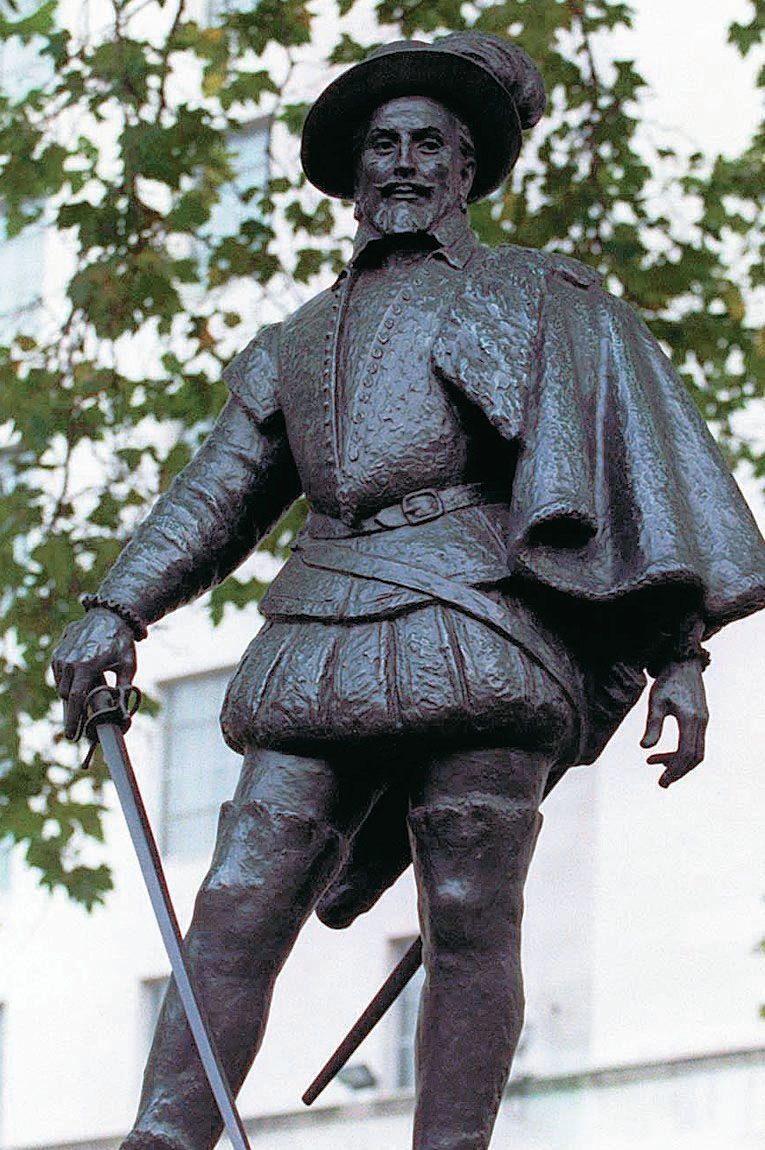
[caption id="InBritainTheseDays_img1" align="aligncenter" width="152"]

BEGIN YOUR ADVENTURE
Events commemorating America’s 400th anniversary with the founding of Jamestown colony in 1607 are already underway on both sides of the Atlantic. The Jamestown 2007 British Committee has planned a full calendar of educational and tourism-related events over the next year. To channel the interest of Americans into discovering their roots on English soil, the Kent Tourism Alliance has launched a superb Web site on the first chapter in the history of the United States. A colorful interactive map leads readers across the Eastern counties of England from Kent to Lincolnshire, locating and explaining dozens of sites with connections to colonial America’s early settlement. For those who might like to go across the pond and explore for themselves, the Web site provides a variety of tour and itinerary ideas: www.beginyouradventure.co.uk.
THE GREAT BRITISH ARMED ROBBERY
[caption id="InBritainTheseDays_img2" align="aligncenter" width="1024"]

©Dan Rogers
Dick Turpin and the Lavender Hill Mob, eat your heart out. Britain’s biggest armed robbery in history grossed a cool 53 million quid for the well-organized gang that knocked over a Securitas cash depot in Kent this February. In a tactic known as “tiger kidnapping,” gang members posing as police kidnapped both the depot manager and his family in separate incidents. The manager’s wife and son were held hostage as the manager was coerced into getting the gang into the Tonbridge depot in the middle of the night.
[caption id="InBritainTheseDays_img3" align="aligncenter" width="1024"]

Jamestown 2007, British Committee Tourism Partnership
Six masked men armed with handguns tied up at least 15 men inside and loaded sackfuls of banknotes into a white paneled truck before making their getaway. An hour later, a member of the staff managed to wrestle himself free and raise the alarm. Fortunately, no Securitas staff were hurt during the robbery, and the manager’s wife and son were later released unharmed. Vehicles used in the heist were found in surrounding villages, and several suspects are in custody. Do you think there will be a movie? Web site: www.bbc.co.uk/news
THE LOST CHAPEL AT GREENWICH
London archaeologists are beside themselves with excitement. The Palace of Placentia at Greenwich was a favorite Tudor royal residence. The palace was torn down in the 17th century to make way for what is now the Old Naval College. Paintings and records had always shown the existence of Henry VII’s royal chapel as part of the palace complex. Until a bulldozer scraped up against brickwork beneath 4 feet of heavy clay this winter, however, no physical evidence of the chapel had ever been discovered.
Now, a team from the Museum of London has uncovered the eastern wall of the chapel and a section of floor made from black-and-white tiles in geometric patterns. It was at Placentia that Henry VIII married Catherine of Aragon and Anne of Cleves. Both of his daughters, Mary and Elizabeth, were born there. Senior Museum of London archaeologist Julian Bowsher enthused, “This is the most important find I’ve made in the past 10 years.” Web site: www.museumof london.org.uk
BAA BAA SHETLAND SHEEP
For a dozen centuries, the economy of Scotland’s northern isles has relied upon the hardy native breed known as Shetland sheep. Their soft, warm wool has a light texture more suited to knitting than weaving. Women across the islands supplemented the meager livelihood of crofting by hand-turning Shetland wool into knitwear. By the mid-19th century, the knitters of Fair Isle were renowned for their colorful patterned sweaters. Knitting machines have largely replaced hand knitting even in what is still largely a cottage industry in the Shetlands, and hand knitting is a dying craft. Fewer and fewer women can spend the 100 hours needed to hand knit just one sweater. Whether knit by hand or hand finished, all real Shetland knitwear bears the trademark “Shetland Lady,” but if you’d like an heirloom knit by hand in the Northern Isles, better hurry. Web site: www.visitShetland.com
60 YEARS OF CONSERVATION
The Wildfowl and Wetland Trust commemorates its 60th anniversary this year with a variety of events at each of its nine centers across the UK. Founded by artist and naturalist Sir Peter Scott in 1946, the WWT is the largest wetland conservation organization in Britain. It manages some 5,000 acres of wetland bird reserves, with the mission of conserving the biodiversity of wetlands and the habitats of some 180 species of birds resident in their reserves.
Headquarters of the WWT are at Slimbridge, near Berkeley Castle on the Severn Estuary, where Sir Peter’s vision for the Trust first became a reality. Today, Slimbridge is the largest wildfowl reserve in the world. Its award-winning visitors center overlooks world-famous protected wetlands that are an important wintering area for migratory birds. Slimbridge also houses the WWT’s ongoing species conservation program. Web site: www.wwt. org.uk
[caption id="InBritainTheseDays_img4" align="aligncenter" width="689"]

Auguste Rodin, The Kiss, Private Collection
BODIES AT BURGHLEY HOUSE
Burghley House, Stamford, in Lincolnshire, is one of England’s grandest Elizabethan stately houses, home of the Cecil family for more than 400 years. Among England’s most important country houses, Burghley House this summer will host two major exhibitions of sculpture based on the human form. One exhibition, “Heavenly Bodies,” is displayed throughout the house and includes loans from such important museums as the Tate and the Victoria & Albert Museum, the Ashmolean Museum, the Fitzwilliam Museum and various private collections. Some 30 major works by eminent sculptors such as Edgar Degas, Sir Alfred Gilbert, Henry Moore and Auguste Rodin have been gathered for the first such important exhibition ever seen in a historic house. It will be open to the public throughout the 2006 season to October 29 (excluding Fridays).
The second exhibition, “Heavenly Bodies: Astrological and Anatomical,” will feature contemporary sculpture in the 12-acre Sculpture Garden throughout the season. And in the newly opened Brewhouse Education Centre, the new Treasury Exhibition Room on the first floor features the famous Burghley Collection of antique Chinese snuff bottles! Web site: www.burghley.co.uk
“TITANIC SUNK—NO LIVES LOST”
When the Daily Mail ran that famous headline in 1912, the Newspaper Publishers Association was a fledgling trade association for Britain’s national press. This year, to mark the centenary of the NPA, the British Library is staging a major new exhibition celebrating 100 years of the British newspaper.
[caption id="InBritainTheseDays_img5" align="aligncenter" width="627"]

Time Life Pictures/Getty Images
Running from May 25 to October 8, the exhibition chronicles the enormous changes in news gathering, reporting and newspaper production over the past century. Built around the memorable front pages of a score of newspapers from 1906 to today, the exhibition thematically unfolds British press treatment of war, disasters, assassinations, royalty, sports, society, scandals and national celebrations. Curators of the exhibition have mined a national archival collection of newspapers occupying nearly 20 miles of shelving for the event. Web site: www.bl.uk
HONORING SIR WALTER RALEIGH
After a 12-year campaign led by local MPs, a new statue of 16th-century explorer Sir Walter Raleigh has been unveiled at his birthplace in East Budleigh near Exmouth, Devon. Born in 1552, the swashbuckling adventurer was knighted by Queen Elizabeth I in 1587. The life-size bronze casting of Raleigh mounted on a plinth of local stone honors the man who, among other things, brought potatoes and tobacco back to England from the New World. Impossible as it is to imagine modern Britain without fags and chips, no lasting memorial to the local hero existed in the village of his birth. It somehow seems appropriate that the monument, by noted sculptor Vivien Mallock, was paid for by British American Tobacco. Web site: www.bbc.co.uk/news
[caption id="InBritainTheseDays_img6" align="aligncenter" width="765"]

MATTHEWS ISOBEL MATTHEWS/EMPICS





Comments